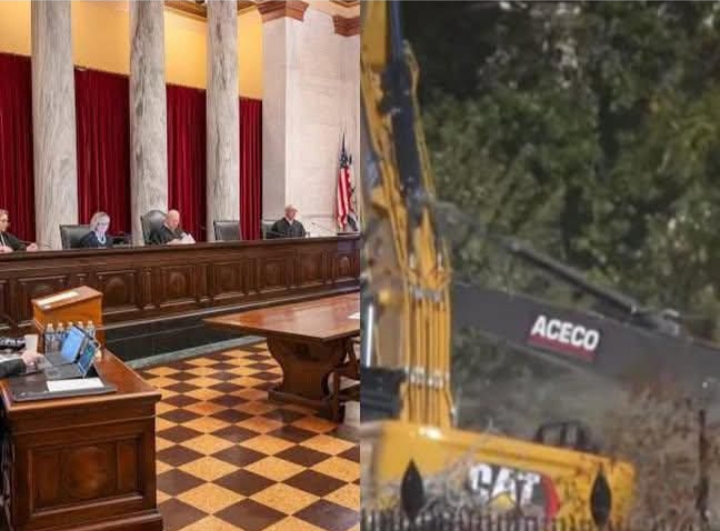CELEBRITY
BREAKING: The Supreme Court sets a hearing date for Donald Trump’s alleged illegal demolition of the White House East Wing after the National Trust for Historic Preservation filed a $10 billion lawsuit against him for violating federal environmental and heritage protection laws. Insider called this war…see more Full details ⤵️

BREAKING: The Supreme Court sets a hearing date for Donald Trump’s alleged illegal demolition of the White House East Wing after the National Trust for Historic Preservation filed a $10 billion lawsuit against him for violating federal environmental and heritage protection laws.
Full details ⤵️
**BREAKING: Historic court showdown looms over Donald Trump and the White House East Wing**
In a case with potentially far-reaching implications for presidential authority and historic preservation, the Supreme Court of the United States has officially scheduled a hearing to review allegations that former President Donald Trump ordered the demolition of the White House East Wing without the required federal reviews and clearances.
The suit was filed by the National Trust for Historic Preservation, which accuses Trump of violating federal environmental and heritage‐protection laws and is seeking **US $10 billion in damages*
—
### What’s happening
According to the complaint, Trump authorised the demolition of parts of the East Wing — a key component of the White House complex, long regarded as a historic building — to make way for a new ballroom and expanded facilities. The plaintiffs contend that this was done *without* the necessary statutory reviews required under laws such as the National Historic Preservation Act (NHPA) and the National Environmental Policy Act (NEPA)
The hearing before the Supreme Court signals that the justices believe the claim raises substantial constitutional or federal‐law issues — namely, to what extent the President may act unilaterally in altering federally-owned historic property. Legal analysts say it could mark a “historic moment” in the balance of executive power and heritage protections.
—
### Why it’s controversial
* The East Wing of the White House has architectural and historical significance (the building was originally constructed in the early 20th century). ([Wikipedia][3])
* Normally, major changes to federal property trigger reviews under the NHPA (including Section 106 review, meaning agencies must consider historic impact) and under NEPA (environmental impact). However, the preservation group argues that the administration sidestepped virtually all of these steps. ([Courthouse News Service][2])
* Supporters of the administration say the modifications were part of necessary modernization and that the President has broad authority over the Executive Residence. Critics argue this sets a dangerous precedent: that even the White House might be subject to sweeping renovation (or demolition) without accountability.
Trump himself has weighed in. According to reports, he warned the Court’s ruling “could lead to ruination — not just for me, but for every future president who dares to make America better.” ([USAmidia][4])
—
### What the hearing could decide
The Supreme Court’s review might address several key questions:
* Does the President’s control of the White House exempt him from standard federal historic-preservation and environmental procedures?
* If a federally-owned historic structure is altered or demolished without required review, can the individual who ordered it (even a President) be held liable for billions in damages?
* What standard of review will apply — and what remedies are available if the Court finds violations?
If the plaintiffs prevail, the consequences could include not only monetary liability but possibly orders to restore demolished portions of the East Wing or halt further construction until proper review is completed.
—
### Next steps & timeline
* The Supreme Court has set a date for oral argument (exact date not publicised in all sources).
* Meanwhile, lower‐court proceedings are likely to continue: gathering the record, briefing legal issues, and possibly issuing interim orders.
* Public reaction is already intense: heritage groups are mobilising, preservation advocates call this a watershed moment, and Trump’s supporters view it as yet another legal attack.
—
### Significance
This case could be among the most important in years for national heritage and executive power. The White House is arguably the most symbolic public property in the United States; how and by whom it may be altered matters deeply. As one preservation expert put it, “the Court is saying: even the President must obey the nation’s preservation and environmental laws.” ([Best Mystic Zone][5])
For watchers of constitutional law, environmental regulation, and historic preservation, this is one to follow closely.












